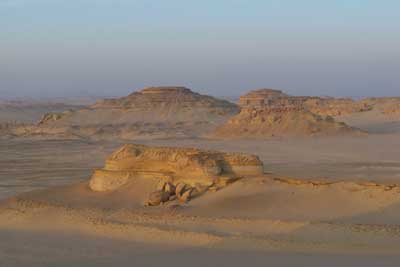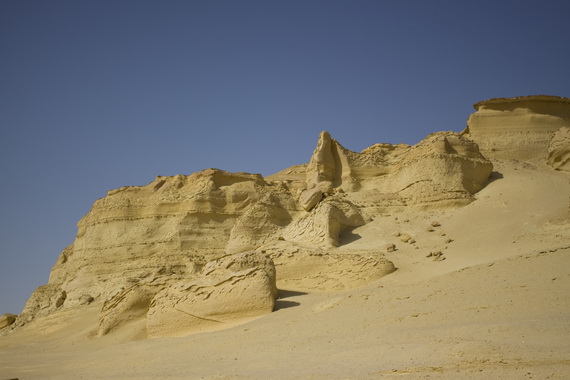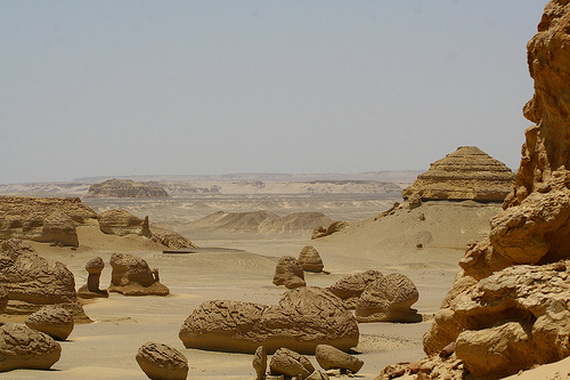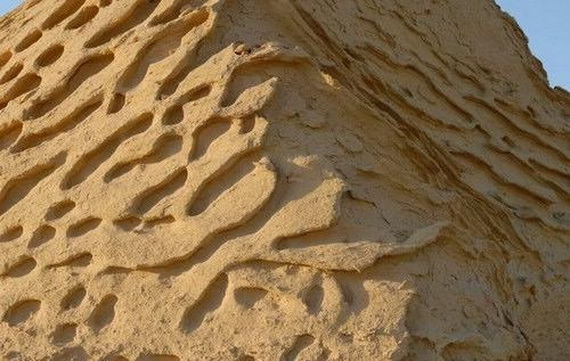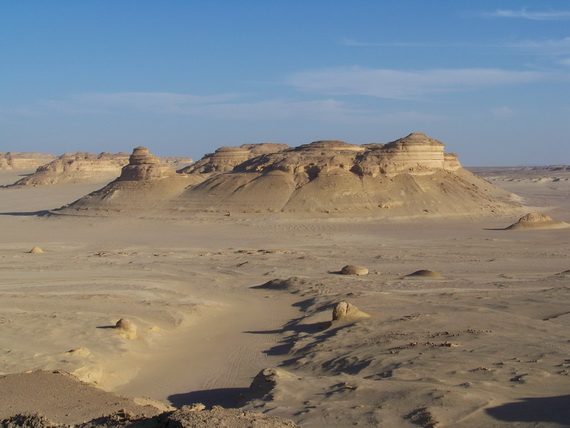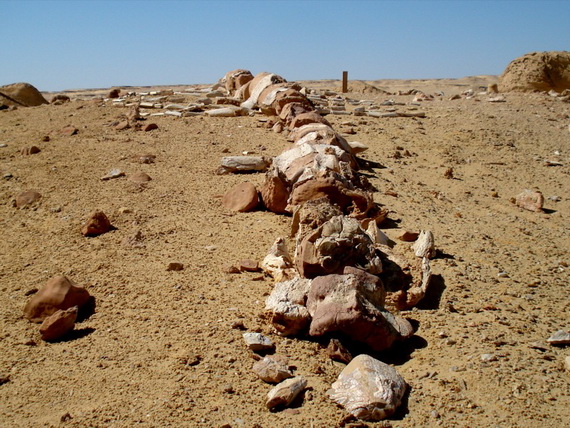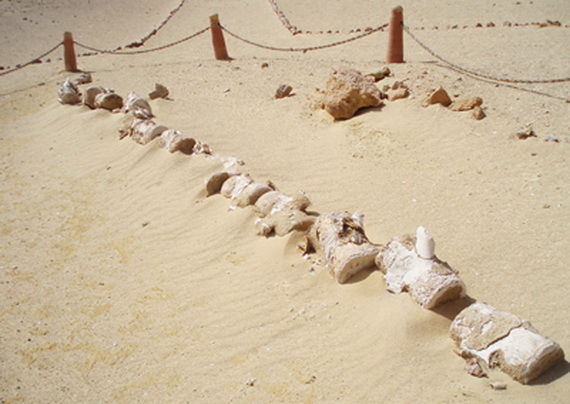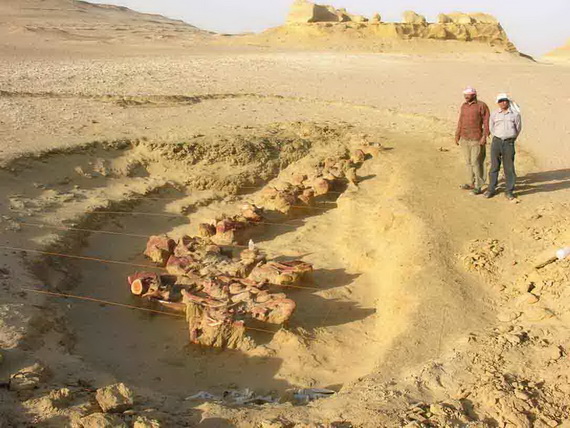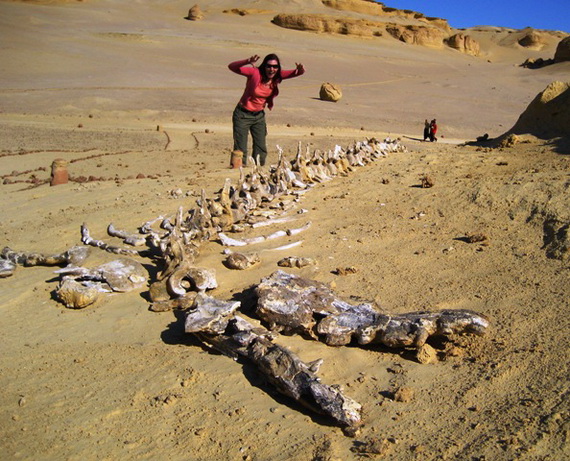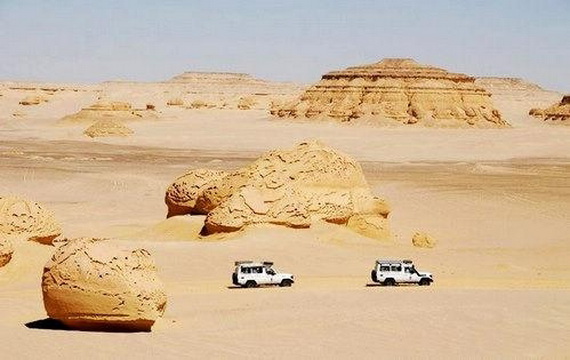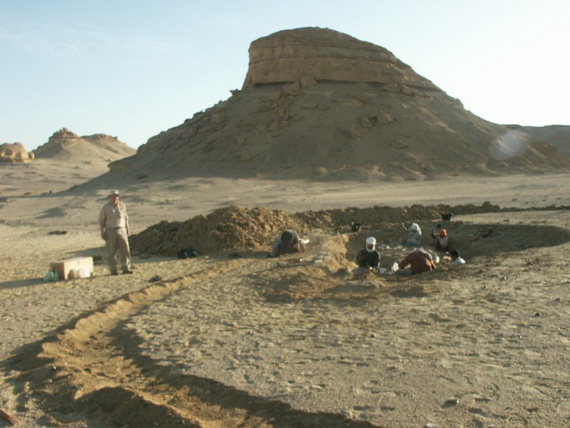Wadi Al-Hitan, Whale Valley is an important natural reserve 150 km remote prehistoric site, about 200 km southwest of Cairo and in the Western Desert of Egypt. Wadi Al-Hitan, Whale Valley is also known for scientists as the Zeuglodon Valley, have been discovered in 1936. The first fossil skeletons of whales were discovered in the winter of 1902-3, it attracted little interest, due to the difficulty of reaching the area. The valley is located behind a mountain, known as Garet Gohannam, (gara) means hill or mountain and Garet Gohannam means the mountain of hell. In the light of the setting sun, the mountain seems ablaze with an eerie red light drawing a fascinating scene. Wadi Al-Hitan contains hundreds of invaluable fossil remains of the earliest, and now extinct, suborder of whales, the archaeoceti are being exposed by the wind and now have been discovered giving the valley its name. Wadi Al-Hitan is of important paleontological interest due to the existence of wide variety of fossilized flora and fauna and the most important site in the world to demonstrate one of the major stories of evolution of the whales. According to the World Conservation Union, Valley of the whales is the most significant site in the world to demonstrate the evolution of whales.
The site is considered as an open museum, owes important 40 million year-old whale skeletons emergening from a previous life as land animals to a marine existence. A fossil display the typical streamlined body of the whales and ancestors of the modern day whales, whilst retaining certain primitive aspects of skull and tooth structure. The fossils of Al-Hitan demonstrated the youngest archaeocetes in the last stages of losing their hind limbs and vividly the form and life of these whales during their transition. The Whales lie trapped in a big number ( about 400 rare fossils of whales), concentration and quality in a sandstone formation that represents an ancient sea bed which is unique, as their accessibility and setting is in an attractive and protected landscape, no other place in the world yields so.
Wadi Al-Hitan today is a Protected area and was inscribed and cited as a World Heritage Site on 15th July 2005 due to the presence of a big number fossils and other early fossil material and animals such as sharks, shark teeth, crocodiles, sawfish, turtles , rays, shells and roots of Mangroves preserved in soft rocks. Petrified sea shell and corals are every where. The site makes it possible to reconstruct the surrounding environmental and ecological conditions of the time.
Wadi El-Hitan is characterized by its integrated desert environment consisting of existence of movable sand dunes, four natural sulfuric springs , different wild animals and important and various sea fossils. Wadi El-Hitan is also home to 15 species of desert plants and about 15 types of wild mammals including the North African jackal, red fox, fennec fox ( sand fox ), Egyptian mongoose, African wildcat, the white deer, the Egyptian deer, dorcas gazelle ,and others, and 16 species of reptiles , and over 100 species of resident and migrating birds.
There are nomuch wadi Al-Hitan Guided Tours, only about 1,000 visitors a year expecially on winter weekends drive into wadi Al-Hitan by 4WD due to the fact that the track is unpaved and crosses unmarked desert sands.
Travel Resources
Wadi Al-Hitan (Whale Valley) Hotels – View hotels near this location, check availability, maps, photos and reviews, and book at the guaranteed lowest price
Wadi Al-Hitan (Whale Valley) Guided Tours – sightseeing tours and activities in Egypt
View a selection of Books on Wadi Al-Hitan (Whale Valley) at Amazon.



















